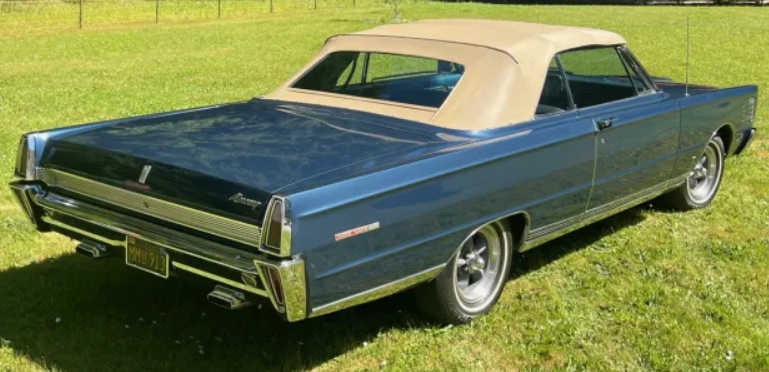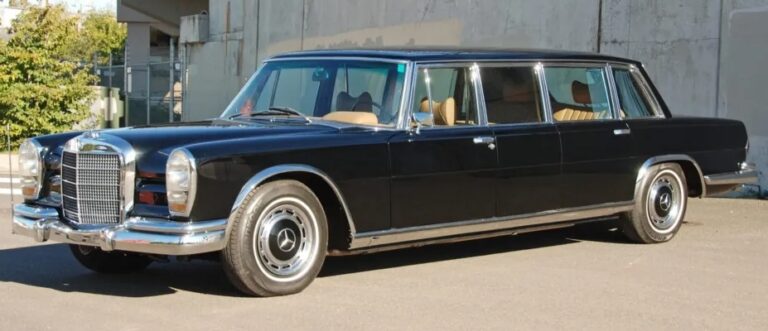The Evolution of the Mercury Park Lane
The Mercury Park Lane is a name that evokes nostalgia among classic car enthusiasts, representing a bold vision for the mercury brand during the mid-20th century. Born in an era marked by innovation and competition, the Park Lane underwent several transformations from its inception in the late 1950s to its eventual discontinuation in the early 1980s. This article explores the evolution of the Mercury Park Lane, discussing its various models and trim levels over the years.
Origins: The Birth of the Park Lane (1958)
Debuting in 1958, the Mercury Park Lane was launched as a premium full-size automobile, positioned above the Montclair and below the marquee’s most luxurious offering, the Colony Park. Initially, the Park Lane was designed to compete with the likes of the Buick Electra and the Oldsmobile 98, providing more features, comfort, and performance than its sister models.
The first model year saw a rave response with its lavish interiors, remarkable design, and a robust V8 engine option. It was offered as a two-door hardtop and a four-door sedan as part of Mercury’s 1958 line-up. The Park Lane featured a distinctive roofline, intricate chrome detailing, and boldly styled tailfins, a hallmark of late 1950s automotive design.
1959-1960: Refinements and Changes
The introduction of the Park Lane was a hit, and Mercury made several refinements for the 1959 model year. They reshaped the design to incorporate a more modern aesthetic. The chrome accents became more pronounced, and a wider wheelbase provided better handling and ride quality.
For the 1960 model year, the Park Lane continued on its evolutionary journey with subtle styling updates, including a fresh grille design and the addition of new color options. The level of luxury that Mercury aimed for was maintained, and buyers were offered a wide range of upholstery choices and convenience features.
1961-1963: The Growth Years
In 1961, the Park Lane became its own distinct model, separating from the Montclair. The Mercury Park Lane was available in four main body styles: two-door hardtop, four-door hardtop, four-door sedan, and the elegant convertible.
This generation introduced more potent engine options: several full-size models featured a 390 cubic inch V8, offering significant horsepower to compete against other high-end vehicles. Mercury focused on comfort and travel with enhanced features, giving it a luxurious feel suited for families.
By 1963, Mercury made slight design changes and continued to prioritize comfort. The interiors were plush, and the vehicles were equipped with features such as air conditioning, advanced audio systems, and more plush seating materials.
1964-1968: Peak Popularity
The mid-1960s represented a golden age for the Mercury Park Lane. It reached peak popularity in 1964 when it was redesigned to incorporate a larger, bolder look. The signature elongated body, square lines, and distinctive taillights attracted a growing customer base. The model was now part of the full-size class segment, often competing directly with Cadillac’s entry-level models.
In 1965, Mercury introduced a new trim level known as the “Park Lane Custom,” making it possible for buyers to choose between more luxurious and performance-oriented configurations. This period also saw the inclusion of a more powerful engine lineup, including the introduction of the 427 cubic inch V8, making it an attractive option for performance enthusiasts.
From 1966 through 1968, the Park Lane saw minor cosmetic changes while retaining the powerful engine options and luxurious trims that turned heads on American roads.
.
MANY auto lovers not only spend time in their garages to tinker on their autos, but have other projects going on in there as well. Wood working is a popular pastime for the creative type of individual. Not sure what to make next? Or thinking about getting into this kind of hobby? There’s lots of possibilities… Here’s some of them…

.
1969-1973: Transitioning Designs
As the automotive industry began evolving toward more compact, fuel-efficient vehicles in the early 1970s, the Park Lane shifted its focus. With new emission regulations and changing consumer preferences, the 1969 model marked the beginning of a design transition. The body style softened with more rounded edges and a less aggressive stance than its predecessors.
The 1971 model year introduced the Park Lane Coupe, a more refined version that emphasized comfort and style. Trim levels remained extensive, with the standard Park Lane offering rich interior materials and the top-tier Park Lane Brougham delivering maximum luxury. Both configurations included additional comfort features, and buyers enjoyed robust engine choices, including the 360 cubic inch V8 and the more powerful 429 cubic inch V8.
1974-1978: The Final Years
With the gas crisis of the early 1970s influencing buyer preferences toward smaller cars, the Mercury Park Lane began to feel the effects. The model was kept alive through gradual modifications, transitioning towards a more subdued and conservative design approach. In 1974, Mercury shifted the Park Lane more towards luxury rather than just sporting appeal, introducing softer styling elements, automatic climate control, and other amenities.
The 1975 Park Lane saw the introduction of the last notable trim level—the Park Lane Brougham. It represented the epitome of Mercury’s luxury offerings, equipped with plush velour seating and an advanced stereo system. As part of the industry’s significant changes in the mid-1970s, fewer full-sized sedans were sold, leading to decreasing demand for the Park Lane.
In 1978, Ford made the decision to discontinue the Mercury Park Lane brand. After two decades of production, the model was retired, closing the chapter on a luxurious vehicle that had once symbolized prestige and comfort in American automotive history.
Conclusion
The Mercury Park Lane might have faded into the memorabilia of automotive history, but its evolution tells a compelling narrative of changing American tastes, design priorities, and performance expectations from 1958 to 1978. As a symbol of luxury within the Mercury brand, each generation contributed unique features, trims, and power options designed to appeal to the preferences of their time.
Though it no longer graces the streets today, the Mercury Park Lane remains a prominent marker of automotive history, representing an era where luxury cars emphasized both comfort and powerful performance in a time of rapidly changing consumer expectations. Classic car enthusiasts and collectors alike continue to celebrate the model’s design, engineering, and historical significance, ensuring that the legacy of the Mercury Park Lane endures.







